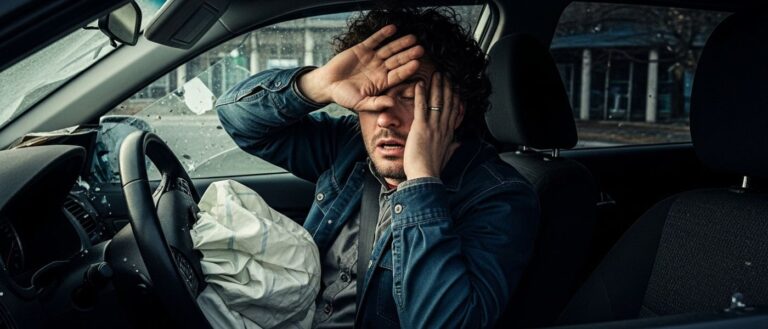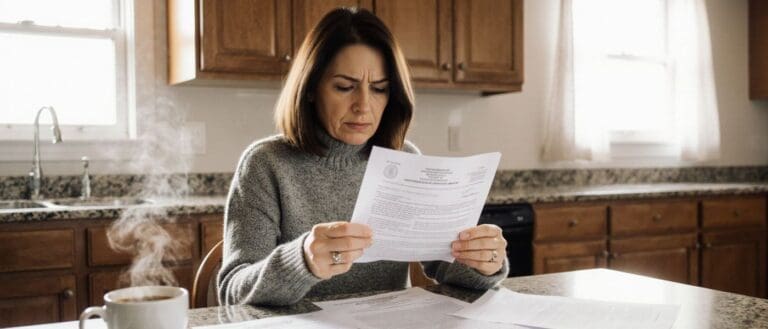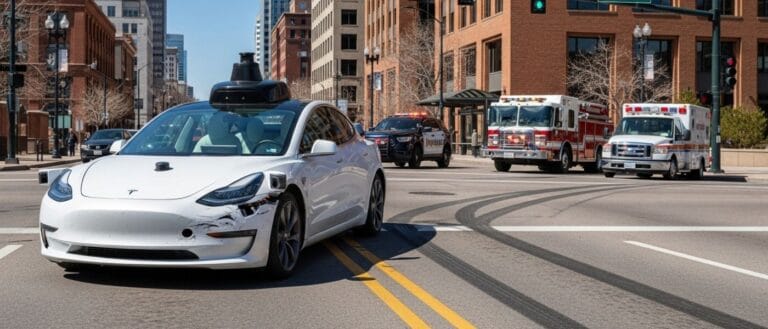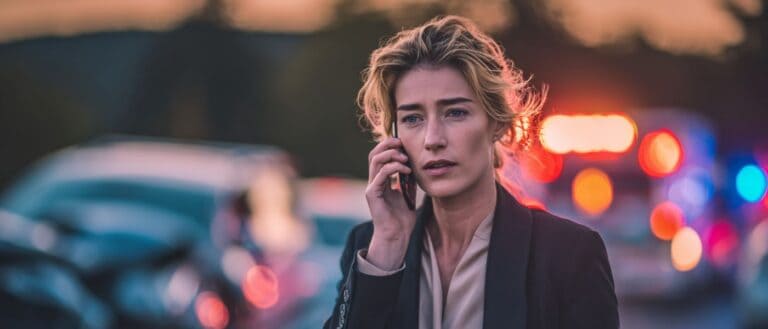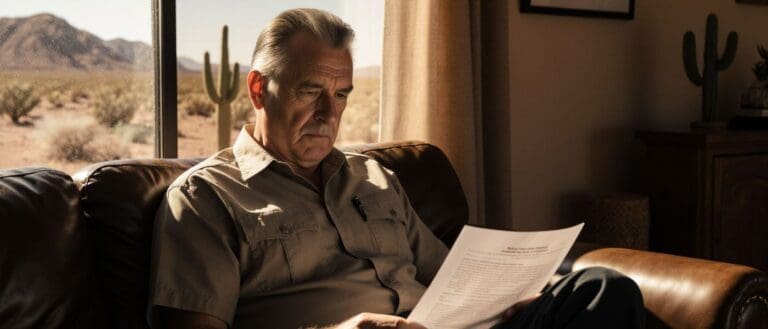Who is liable in a Tesla Autopilot crash?
In most Tesla Autopilot crashes, the driver is still considered legally responsible, not Tesla. Even though many Tesla vehicles have advanced features like Autopilot, these cars aren’t truly self-driving. The law expects drivers to stay alert and ready to take over at any moment.
There are cases where Tesla might share some blame—like if the company was misleading about what Autopilot can actually do. Courts look at how Tesla markets its tech and what the company knows about its limitations. This whole question of liability is still evolving as more accidents and lawsuits come up.
Understanding Tesla Autopilot and Full Self-Driving Capabilities
Tesla vehicles come with advanced driver-assist systems called Autopilot and Full Self-Driving (FSD). These features are supposed to make driving easier and maybe safer, but they still require the driver to pay attention. Human oversight isn’t optional with today’s so-called self-driving tech.
Defining Autopilot and FSD Features
Tesla’s Autopilot includes things like adaptive cruise control, lane keeping, and traffic-aware functions. The car can steer, speed up, and brake within its lane, but it’s not a robot chauffeur.
Full Self-Driving (FSD) adds extras like automatic lane changes, traffic light recognition, and the ability to navigate on highways with minimal driver input. FSD is a separate package, and Tesla pushes out new features via software updates now and then.
But neither Autopilot nor FSD turns a Tesla into a fully self-driving car. Drivers have to keep their hands on the wheel and be ready to jump in. The Society of Automotive Engineers (SAE) calls these Level 2 systems, which still need full driver attention.
Tesla’s Safety Warnings and User Agreements
Tesla spells out the limitations of its driver-assist features in the manual and the software agreements. These documents remind people that Autopilot and FSD are not replacements for actual driving. Tesla’s user agreements make drivers promise to stay engaged and not just let the car handle everything.
There are on-screen alerts and warning beeps if the car senses the driver’s hands aren’t on the wheel. If you don’t respond, the car might slow down or turn Autopilot off. Tesla owners have to accept responsibility every time they turn these features on.
Some key reminders from Tesla:
- Continuous driver supervision is mandatory
- The system does not prevent all accidents
- Drivers remain liable for their vehicle’s actions
Automation Bias in Semi-Autonomous Driving
Automation bias is basically when drivers trust automated systems too much, sometimes ignoring warnings or thinking the tech can handle more than it really can. With Tesla’s Autopilot and FSD, some folks start to believe the car will drive itself in any situation.
Research shows that overreliance on driver-assist features can slow down reaction times. If someone assumes the tech will handle every hazard, they might get distracted or just sloppy.
Semi-autonomous driving doesn’t erase the need for human attention. Drivers who forget that can make mistakes—sometimes with big consequences. Tesla keeps repeating its safety messages to fight automation bias, but honestly, the risk is still there whenever people use these systems.
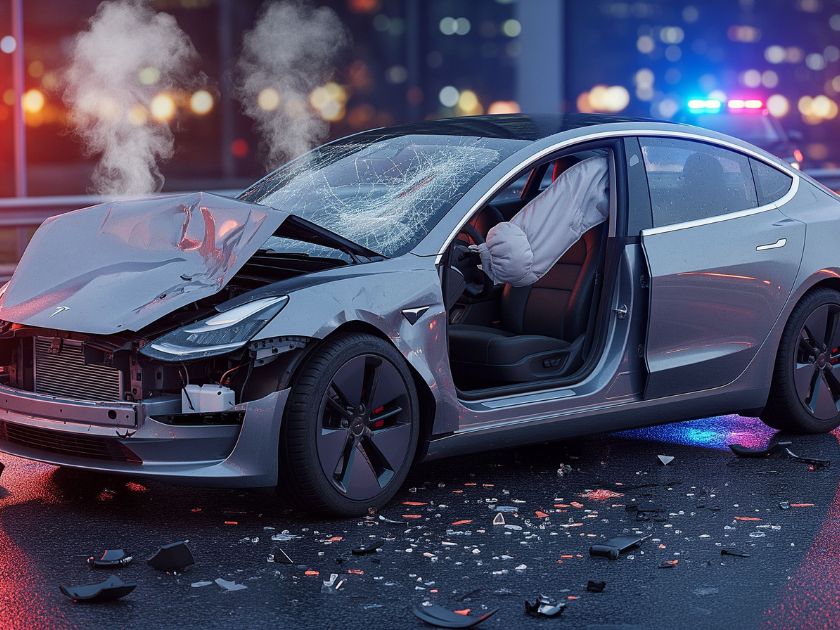
Key Parties in a Tesla Autopilot Crash Liability Case
Liability in a Tesla Autopilot crash could fall on Tesla, the driver, or even someone else. Who’s actually responsible depends on things like software issues, driver actions, and outside factors on the road.
Tesla’s Responsibilities as Manufacturer
Tesla’s job is to design, build, and update the Autopilot system. If a crash happens because of a faulty sensor, a software bug, or misleading marketing about what the car can do, Tesla could be on the hook. Say Autopilot fails to spot a stopped car because of a glitch—Tesla might have to answer for that.
Court cases also look at whether Tesla gave drivers enough warning about what Autopilot can and can’t do. If Tesla hyped Autopilot as safer or more capable than it really is, that’s a problem. Lawsuits sometimes turn up documents showing Tesla managers knew about issues, which can make things worse for the company in court.
Legal claims might focus on:
- Product defect: Was there a design or manufacturing problem?
- Inadequate warnings: Did Tesla tell owners the real limits of Autopilot?
- Software problems: Did updates actually fix known bugs or safety risks?
Driver Accountability and Legal Duties
Even with Autopilot running, Tesla owners are supposed to keep their hands on the wheel and their eyes on the road. The car warns you if your hands are off the wheel too long. Ignoring warnings, using Autopilot the wrong way, or failing to take over when needed can make the driver legally responsible for a crash.
Drivers have to follow traffic laws and can’t just expect Autopilot to do everything. In court, a lot rides on what the driver was doing right before the crash. Data from the car can show if the driver reacted to warnings or was actually paying attention.
Situations where drivers might be at fault:
- Distracted driving: Not watching the road, texting, or even sleeping
- Ignoring warnings: Failing to take control when the car tells you to
- Misuse: Using Autopilot on roads where it’s not meant to be used
Role of Third Parties and External Factors
Sometimes, it’s not just Tesla or the driver. Outside parties or random road hazards can cause Autopilot-related crashes. Think other drivers, pedestrians, or construction crews. For instance, if another car suddenly swerves, even a careful driver and a working Autopilot system might not prevent a crash.
Poor road markings, missing signs, or broken streetlights can confuse the car’s sensors and up the risk. In these situations, local governments, contractors, or other drivers might share legal responsibility. Courts look at whether those external issues directly affected the crash.
Possible outside factors:
- Other vehicles: Sudden lane changes or reckless drivers
- Road conditions: Faded lines, debris, or construction zones
- Malfunctioning infrastructure: Broken traffic lights or missing signs
Liability can get split if more than one thing caused the crash. Each party’s share of blame depends on how much their actions (or inaction) contributed.
Legal Framework for Determining Liability
Liability in Tesla Autopilot crashes can come down to who—or what—messed up: the tech, the driver, or both. Courts look at how well Tesla built the system and if drivers used it the way they were supposed to.
Product Liability in Self-Driving Vehicles
Product liability is about whether the car or its systems—like Autopilot—had a design or manufacturing flaw that caused the crash.
If Autopilot fails while being used as recommended, Tesla could be responsible. Car makers have to make sure their products are safe for normal use. If the software does something weird, courts check if Tesla gave enough warnings or clear directions to users.
Legal experts also look at whether Tesla’s advertising made Autopilot sound more capable than it actually is. Here’s a quick table on possible liability:
| Cause of Fault | Potential Liable Party |
| Software Defect | Tesla |
| Failure to Warn | Tesla |
| Hardware Malfunction | Tesla or supplier |
Plaintiffs have to prove that something in Tesla’s tech directly caused harm.
Negligence and Human Error Considerations
Negligence is when someone doesn’t act carefully enough and someone gets hurt. In many Tesla Autopilot crashes, the driver may be partly responsible if they were distracted or used the system wrong.
Tesla says drivers must stay alert and keep their hands on the wheel. If a driver ignores those rules or uses Autopilot in unsafe conditions, legal experts often see the driver as at least partly to blame.
Comparative negligence can kick in, meaning both Tesla and the driver might share responsibility. If the car warned the driver to take over and the driver ignored it, Tesla’s liability can go down.
Police reports, vehicle data, and witness accounts help figure out how much human error played a role. This helps courts decide who’s actually responsible, and by how much.
Investigations and Regulatory Oversight
Federal agencies are key players when it comes to reviewing Tesla Autopilot crashes. Their findings can lead to recalls or force Tesla to improve software for safety. These investigations end up shaping the safety standards for advanced driving tech across the country.
National Highway Traffic Safety Administration (NHTSA) Actions
The National Highway Traffic Safety Administration (NHTSA) is the main federal agency in charge of vehicle safety in the U.S. They dig deep into crashes involving Teslas with Autopilot.
NHTSA opened formal investigations after reports of Teslas hitting emergency vehicles or missing obstacles with Autopilot on. Some of these probes led to Tesla recalling over 360,000 cars with Full Self-Driving (FSD) software in 2023.
NHTSA checks both the software and hardware that monitor driver attention. That includes looking at whether Tesla’s systems are actually keeping drivers alert when Autopilot is active.
If NHTSA finds safety gaps, it can make Tesla fix things through recalls, software updates, or policy changes. Their reports are public, so there’s pressure on Tesla to address any problems that come up.
Investigations Into Crash Causes
Crash investigations look at how both the car and the driver behaved before and during the incident. Analysts dig into vehicle data, road conditions, and any possible defects in Autopilot.
Regulators and investigators pull together info like telematic data from Teslas, witness statements, and crash site evidence. Sometimes, the car’s data is missing if there’s a loss of connectivity during a crash.
Reports zero in on specific problems, like Autopilot missing obstacles or drivers misusing the system. Findings might call out issues in Tesla’s driver alert features, which are supposed to keep people from zoning out behind the wheel.
The cause of each crash determines whether the driver, Tesla, or both share responsibility. The results of these investigations often end up influencing future safety standards and policy decisions.
Notable Tesla Autopilot Crash Cases
Several lawsuits and court cases have shaped what we know about liability in Tesla Autopilot crashes. Fatal accidents and legal battles over Tesla’s tech have really pushed the boundaries of product safety and legal responsibility.
High-Profile Lawsuits and Fatal Accidents
One notable personal injury lawsuit centered around the fatal crash in Florida back in 2019, where Tesla driver Jeremy Banner died. The Autopilot system didn’t respond to a truck crossing the road, sparking a lot of debate about just how much you can trust Tesla’s automated features.
There’s also the case of Micah Lee, who crashed his Model 3 into a tree with Autopilot on. His family blamed Tesla’s system, but the jury ultimately sided with the company, deciding the driver was responsible in the end.
Class action lawsuits have popped up too, with groups of drivers claiming Tesla’s marketing or tech put them in risky situations. These cases highlight the tangled web of technology, user responsibility, and what automakers say versus what their products actually do.
Landmark Legal Decisions and Precedents
Jury verdicts in several headline-grabbing cases have helped shape the legal landscape. In April 2023, a California jury decided Tesla wasn’t at fault for a 2019 fatal crash—a big win for the company.
Tesla’s main argument has been that drivers must stay alert, and that Autopilot misuse isn’t all on the software. Some courts have bought that logic, which makes these product liability cases tough to win unless there’s solid evidence of a technical failure or misleading info.
Compensation and Damages in Tesla Autopilot Crashes
If you’ve been in a Tesla Autopilot crash, you might be able to get financial help. It’s worth understanding what types of damages you can claim and when to act.
Types of Damages and Claims
People hurt in Tesla Autopilot accidents can go after different kinds of compensation, usually split into economic and non-economic damages.
Economic damages cover costs like:
- Medical bills
- Lost wages
- Car repairs or replacement
Non-economic damages include things like:
- Pain and suffering
- Emotional distress
- Loss of enjoyment of life
Sometimes, courts might hand out punitive damages if there’s proof of serious misconduct. Folks often file personal injury lawsuits to recover these damages. Having an auto accident lawyer on your side helps with gathering evidence, figuring out what your claim’s worth, and making sure the paperwork gets filed.
Statute of Limitations and Filing Requirements
Every state sets a statute of limitations—basically, a deadline for filing after an accident. It’s often two or three years, but not always, so it pays to check.
If you miss the window, you’re probably out of luck on collecting compensation. Filing usually means submitting police reports, medical records, and proof of damages. A lawyer can help make sure everything’s done right and on time.
Advertising, Misrepresentation, and Consumer Protection
Tesla’s marketing and public statements about Autopilot have stirred up a fair amount of legal and consumer protection drama. There’s ongoing scrutiny over whether the company’s claims misled buyers or gave the wrong impression about what the tech can actually do.
Misleading Advertising and Material Misrepresentations
Some lawsuits have argued that Tesla’s marketing paints Autopilot as more capable than it really is. Phrases like “full self-driving” and bold safety claims have left some owners thinking their cars could basically drive themselves.
Internal documents unearthed in court have shown that executives—including Elon Musk—knew about certain system limitations. If it turns out a company knew about flaws but told buyers otherwise, that’s a material misrepresentation in legal terms.
Material misrepresentations are basically false claims about something important. With Autopilot, the big question is whether buyers were led to depend on the system where it just couldn’t handle the job. That kind of confusion puts both drivers and everyone else on the road at risk.
False Claims and Consumer Rights
False advertising, especially with semi-autonomous vehicles, really muddies the waters for consumers. Some accident cases have dug into whether Tesla’s claims about Autopilot actually shaped how drivers behaved behind the wheel.
Consumer protection laws exist to keep buyers from being misled. If a court decides Tesla’s ads gave a wrong impression about Autopilot, buyers might be eligible for compensation or other remedies. There are regions where courts have already said Tesla crossed the line with its marketing.
Key protections include:
| Legal Concept | Focus |
| Misleading Ads | Claims must match real-world performance |
| Consumer Rights | Buyers can seek recourse if harmed by false or misleading ads |
| Material Facts | Critical information must not be hidden or misrepresented |
Making sure advertising is honest is at the heart of both consumer safety and holding companies accountable.
Regional and Case-Specific Considerations
Who’s liable for Tesla Autopilot crashes? It really depends—state laws, court decisions, car models, and accident details all play a role. The rules and outcomes can make a big difference in who’s left holding the bag after a wreck.
Colorado Legal Developments
In Colorado, courts take a close look at what the driver was doing and whether the tech itself glitched. If a Tesla on Autopilot crashes, investigators dig into whether the driver was paying attention and if Autopilot had a malfunction.
Colorado uses a “modified comparative fault” rule. If you’re more than 50% at fault, you can’t collect damages from others. But if a flaw in Tesla’s system helped cause the crash, product liability laws might let you take the automaker to court.
Cases often hinge on technical evidence—sensor data, accident logs, stuff like that. You’ve got to show a direct link between a specific system error (like missing cross-traffic) and the actual crash.
Arizona Laws and Case Examples
Arizona does things differently, with pure comparative negligence. That means even if you’re mostly at fault, you can still try to recover some damages. This really matters in Tesla Autopilot cases, since both driver mistakes and possible system flaws get weighed in court.
Phoenix and other cities have seen their share of Tesla crashes—on highways and city streets alike. Lawsuits often claim Autopilot didn’t spot stopped vehicles or missed obvious hazards like a crossing semi.
Arizona courts dig into everything from vehicle logs to dashcam footage and witness accounts. Legal arguments tend to revolve around how Autopilot performed in tricky situations, or whether it gave drivers enough warning before a crash.
Tesla Model S, Model 3, and Other Vehicles
Liability can hinge on which Tesla model was involved in the crash. Some accidents—like that Florida case with a Model S and a tractor-trailer—have fueled ongoing debates about Autopilot safety. In that one, investigators dug into how the system reacted and whether any design flaws played a part.
The Model 3 has popped up in several legal battles, especially in California and Los Angeles. Plaintiffs sometimes claim the software didn’t really handle certain road conditions or cross-traffic as well as it should’ve.
Legal claims might point to differences in Autopilot features between older and newer models. Courts often zero in on vehicle logs and what the car could technically do to figure out if Tesla or the driver should shoulder more of the blame for the accident.



